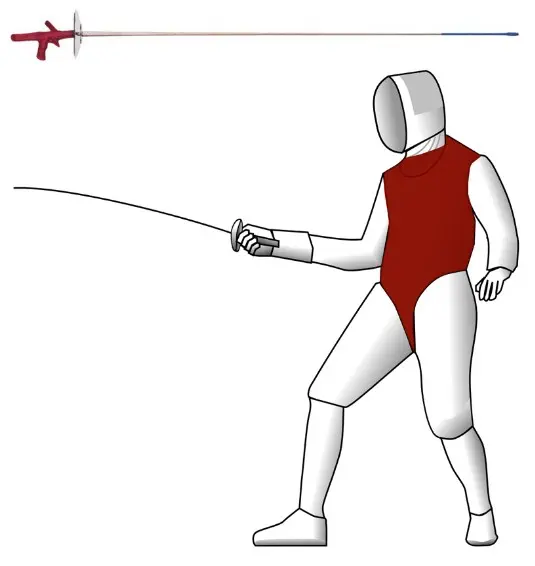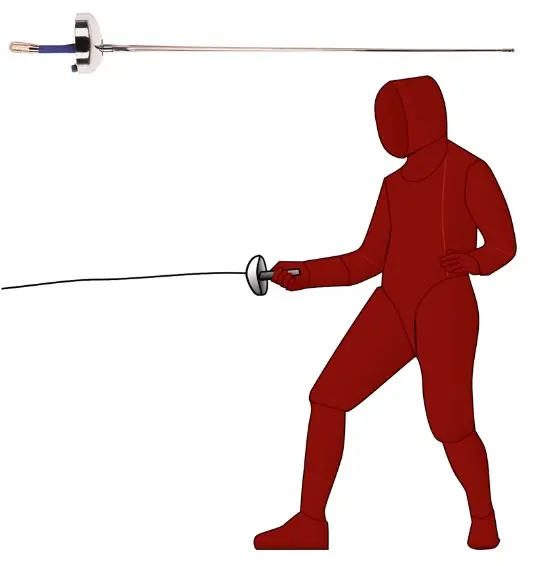Weapons
Three Types of Swords in
Fencing

Foil
Foils began as safer and lighter practice weapons used by duellers to hone their skills. The term "foil" is derived from the French word "refouler," meaning "to turn back." The foil blade is usually very flexible, around 35 inches in length and square in cross section. This sword is lighter in weight than both the epee and the sabre from hilt to tip. Foil fencing is scored on a thrusting strike to only the front or back torso. For this reason, the guard of the foil can be somewhat smaller than the epee, where any touch counts while fencing. The use of the foil as a tool for training and practice, as well as competition, has helped to shape the sport of fencing as a whole.
Only a single hit can be scored by either fencer at one time. If both fencers hit at the same time, the referee uses the rules of "right of way" to determine which fencer gets the point.
Target Area
Trunk of the body, including the back, which has increasing become a realistic target with modern techniques. This is covered with a lamé (electrically conductive) jacket.

Sabre
Unlike the foil and epee, which are exclusively thrusting weapons, the sabre is used to both slash and thrust. The history of the sabre recounts its use as a military weapon, particularly among cavalry. In fact, the target area of modern sabre fencing, which includes the entire upper torso excluding the hands, was strongly influenced by the common use of the sabre when fighting on horseback. The sabre of today is a light, flat blade with a front striking edge and a flat spine. The guard of the sabre is relatively large and cup-shaped with a curved guard that wraps around the hand to the pommel at the end of the handle. Points are scored by striking an opponent with the front of the blade, as well as the forward third of the back edge or point of the blade.
In the case of both fencers landing a scoring touch, the referee determines which fencer receives the point for the action, again through the use of "right of way".
Target Area
All of the body above the waist, which is covered with a lamé jacket, except hands (for technical reasons) but including the head, so the mask is also conductive

Epee
The epee is as long as a foil, but has a much heavier blade with a triangular cross-section and fluting along the sides of the blade. The shape, weight and fluting originated with the rapier, an ancient duelling sword on which the epee was based. The design of the rapier was primarily intended to inflict a thrusting wound with a blade that would allow blood to flow more freely. The epee is also a thrusting weapon and points are scored by striking anywhere on the body. The guard, therefore, is cup-shaped to protect the hand and wrist from being a potential target. Fencing with the epee most closely simulates the conditions of an actual duel.
Epee does not use "right of way", and allows simultaneous hits by both fencers. However, if the score is tied at the last point and a double touch is scored, nobody is awarded the point.
Target Area
The entire body. Therefore a lamé (electrically conductive) jacket is not required unlike the other weapons. However, in practice, because of the danger of being picked off by one’s opponent, most épéists spend most of their time aiming for the wrist – normally the nearest point!

